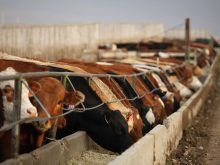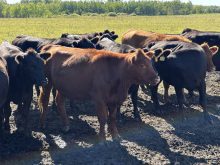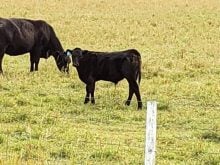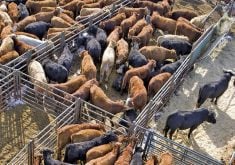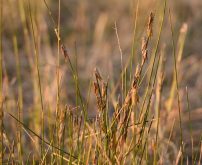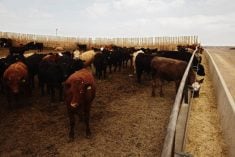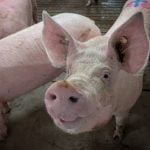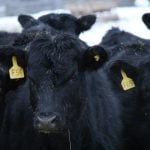Peter Tokar and Jacques Saquet are two Manitoba livestock producers who have applied changes in management practices to help control some particularly difficult pasture weed infestations.
Tokar, who owns a mixed farm — primarily a beef cow-calf operation — near Swan River in west-central Manitoba, deals with patches of burdock on his pastures. Saquet, who raises bison near Laurier, about half way between Neepawa and Dauphin, says foxtail barley can take over pockets of pasture if he’s not careful.
Saquet says concentrating winter bale grazing on foxtail barley patches helps to control that weed. Tokar says maintaining a good grass stand is the best way to prevent burdock from getting established — it takes advantage of bare ground but isn’t very competitive. If he does have a particularly bad infestation, he will use a herbicide such as Grazon to knock it out.
Read Also
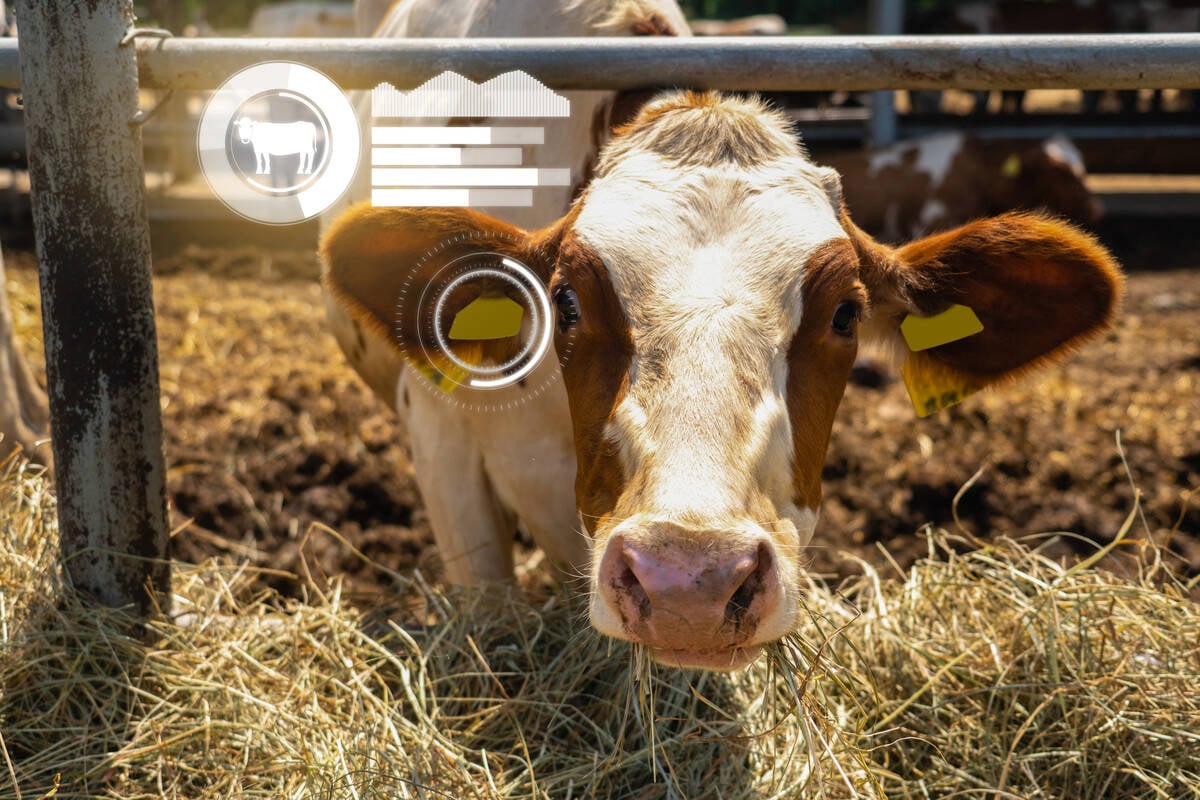
Cows in the cloud
Beef cattle herd management software has become an essential tool over 15 years for Lonesome Dove Ranch in Saskatchewan.
While there are effective herbicides for most weeds found in western Canadian pastureland, these producers have learned that changes in grazing practices and maintaining healthy forage stands are effective measures for controlling weeds. When necessary, herbicides can be an effective tool as well.
Bison on pasture
Saquet, who farms at the base of the Manitoba Escarpment on the east side of Riding Mountain National Park, has been raising bison for about 25 years. Today he runs a herd of about 75 head, produced mainly for meat.
At the home place the soil is quite sandy, but about 1.5 miles away, the bison primarily graze on a 35-acre parcel of darker-soil pastureland with an older stand of tall fescue, brome, timothy, alfalfa and bird’s-foot trefoil. Along with open pasture divided into seven paddocks, there is also an area of bush land.
“I believe the problem started with some hay I bought a few years ago that had some foxtail barley in it,” says Saquet. “It wasn’t thought to be a big deal, but it turned out to be a problem.”
He says the weed appears to like wet, fertile soil. If the bison concentrate in a wetter area in the spring, for example, there is plenty of hoof action and the soil gets exposed, creating an ideal environment for foxtail barley to establish.
Saquet manages the 35-acre pasture in a rotational grazing system. The pasture is divided into seven paddocks plus the bush area. He says that in an average year it takes about 28 days to move the bison through those paddocks.
After the first pass, the bison are removed from the area for about 30 days. If there is sufficient regrowth, they will make a second pass through the pastures during the growing season. The bison are removed again, and if there is regrowth later in the season, they will we brought back to the pasture, perhaps in October, for one more pass before they move onto winter bale grazing.
“I find that winter is the best time to deal with the foxtail barley,” says Saquet. “If there is a patch of foxtail barley I will move the bale feeders to that area, feed two or three bales of hay, concentrating the bison on that area. They leave manure and some hay gets punched into the soil by hoof action. Come spring, there is no sign of foxtail barley. And usually in early spring there is a good release of brome grass and timothy, and the area is lush and green.”
Along with focusing winter bale grazing on patches of foxtail barley, Saquet says he pays attention to buy hay that is free of weed seeds.
Burdock control
Peter Tokar does his best to maintain a healthy forage stand that keeps burdock at bay, and tries to avoid situations were cattle concentrate on wet soil, creating an excellent seed bed for burdock to establish.

“We have situations where a patch of burdock gets established and while it does affect forage production, perhaps the bigger issue is that it creates a real mess,” says Tokar. “Cattle get covered with burrs, they get matted up and they don’t look very good when it comes time for marketing. It is just unsightly and not great for selling cattle.”
While Tokar produces annual crops, beef production is the primary enterprise. The farm calves out about 500 females that are on pasture year-round. “The cows start calving on pasture around May 1,” he says. “They are always on pasture and move through a rotational grazing system throughout the growing season.”
Cattle are moved to a new paddock every four to seven days depending on the growing season. Tokar manages the rotation to allow for plant senescence in different areas of the pasture, which helps forage species to reseed the paddock.
When it comes to burdock, “it really enjoys high rainfall, good fertility and a rotational grazing system,” says Tokar. If cattle concentrate on a certain area, the burdock moves in. It really loves high moisture and high fertility. The weed establishes easily particularly in the forested areas, where cattle congregate.
“Once a patch gets established, nothing else grows there,” he says. “The cattle will eat it at certain times of the year, but it can still grow and produce burrs which they pick up in the fall.”
Tokar knows livestock management is the problem as well as the solution. “If there is a serious infestation of the weed it is because of something I did,” he says. “So the solution is to change the management. I try to manage the rotation so cattle aren’t concentrating in certain areas. We’ve fenced off the forested area so it isn’t used in winter and early spring when the soil is particularly wet.”
And if there is a particularly stubborn patch on pasture, he applies an application of Grazon herbicide. “I’ve tried mowing patches but that doesn’t seem to do much, but if I apply Grazon that takes care of the problem. It has residual activity in the soil and the burdock is gone. Once the burdock is out of the way there is a good seed bank of forage seed in the soil and the grasses immediately bounce back.”
Tokar applies spot herbicide treatments with a 66-foot sprayer mounted on the back of the tractor. The sprayer has a 16-foot boomless nozzle that can apply herbicide to weed patches along a fence line or into a treed areas as needed.
“The best management approach is to monitor the rotation, do our best to keep cattle from congregating in certain areas and aim to keep forage stands healthy and growing. Burdock can’t compete with vigorously growing forages, so the key is do our best so it doesn’t get established. You never totally get rid of it, but at least it is manageable.”
“I’m never going to win the battle with weeds 100 per cent, but at least I aim to maintain a reasonable balance.”




